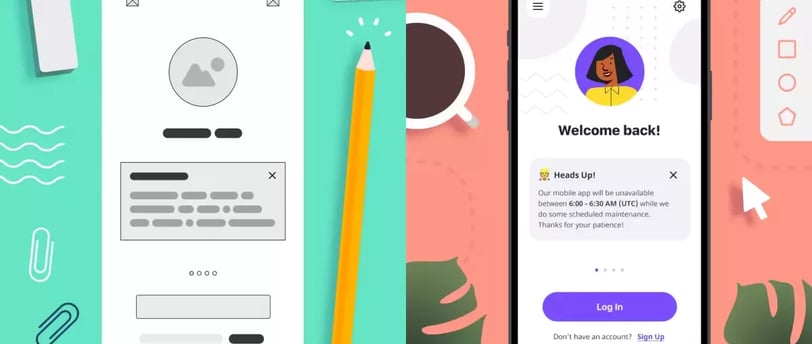Understanding the Differences: Low-Fidelity, High-Fidelity, and Interactive Prototypes
3/27/20243 min read


Understanding the Differences: Low-Fidelity, High-Fidelity, and Interactive Prototypes
When it comes to designing a digital product, prototypes play a crucial role in the development process. They allow designers to test ideas, gather feedback, and refine their designs before investing time and resources into building the final product. However, there are different types of prototypes, each serving a specific purpose. In this article, we will explore the differences between low-fidelity, high-fidelity, and interactive prototypes.
Low-Fidelity Prototypes: The Building Blocks
Low-fidelity prototypes, also known as paper prototypes or wireframes, are the most basic form of prototypes. They are typically hand-drawn sketches or simple digital representations that focus on the core functionality and structure of the product. Low-fidelity prototypes are quick and inexpensive to create, making them an ideal choice for early-stage design exploration.
These prototypes prioritize functionality over visual aesthetics. They are meant to convey the basic layout, navigation, and interaction flow of the product. Low-fidelity prototypes often lack detailed visuals, color schemes, and typography. Instead, they use placeholders and simple shapes to represent different elements of the user interface.
One of the main advantages of low-fidelity prototypes is their flexibility. Since they are quick to create and modify, designers can easily iterate and experiment with different design solutions. They can gather feedback from stakeholders and users early in the design process, allowing for faster iterations and improvements.
High-Fidelity Prototypes: Bringing Designs to Life
High-fidelity prototypes, on the other hand, are more polished and visually detailed. They aim to simulate the final look and feel of the product, including the visual design, typography, and interactive elements. High-fidelity prototypes are often created using design tools like Sketch, Figma, or Adobe XD.
These prototypes provide a more realistic representation of the final product, allowing stakeholders and users to better understand the overall experience. High-fidelity prototypes can include interactive elements like buttons, dropdown menus, and form fields, which users can interact with to get a sense of the product's functionality.
High-fidelity prototypes are particularly useful when presenting the design to clients or stakeholders who may have limited technical knowledge. They help bridge the gap between the design and development teams, providing a shared vision and understanding of the product's look and functionality.
Interactive Prototypes: The Next Level of User Experience
Interactive prototypes take the concept of high-fidelity prototypes a step further. They focus on creating a fully functional and interactive experience that closely resembles the final product. Interactive prototypes are often built using specialized prototyping tools like InVision, Proto.io, or Axure.
These prototypes allow users to interact with the product as they would with the actual application or website. They can click on buttons, navigate through different screens, and even perform tasks or actions. Interactive prototypes provide a more immersive experience, enabling designers and stakeholders to test the product's usability and identify any potential issues.
Interactive prototypes are particularly valuable when it comes to user testing and validation. They allow designers to observe how users interact with the product, gather feedback, and make informed design decisions based on real user behavior. By identifying usability issues early on, designers can make the necessary adjustments to improve the overall user experience.
Choosing the Right Prototype for Your Needs
When deciding which type of prototype to use, it's important to consider the specific goals and requirements of the project. Here are some factors to consider:
- Project Stage: Low-fidelity prototypes are best suited for early-stage design exploration, while high-fidelity and interactive prototypes are more suitable for later stages of the design process.
- Design Complexity: If the design involves complex interactions or animations, high-fidelity or interactive prototypes may be necessary to accurately represent the final product.
- Testing and Feedback: If the primary goal is to gather feedback and validate design decisions, interactive prototypes can provide a more realistic and immersive experience for users.
- Time and Resources: Low-fidelity prototypes are quick and inexpensive to create, making them a cost-effective option for projects with limited time and resources.
In conclusion, low-fidelity, high-fidelity, and interactive prototypes each serve a specific purpose in the design process. Low-fidelity prototypes are ideal for early-stage exploration, high-fidelity prototypes help bridge the gap between design and development, and interactive prototypes provide a realistic and immersive user experience. By understanding the differences between these types of prototypes, designers can choose the right approach for their specific needs and create better digital products.
